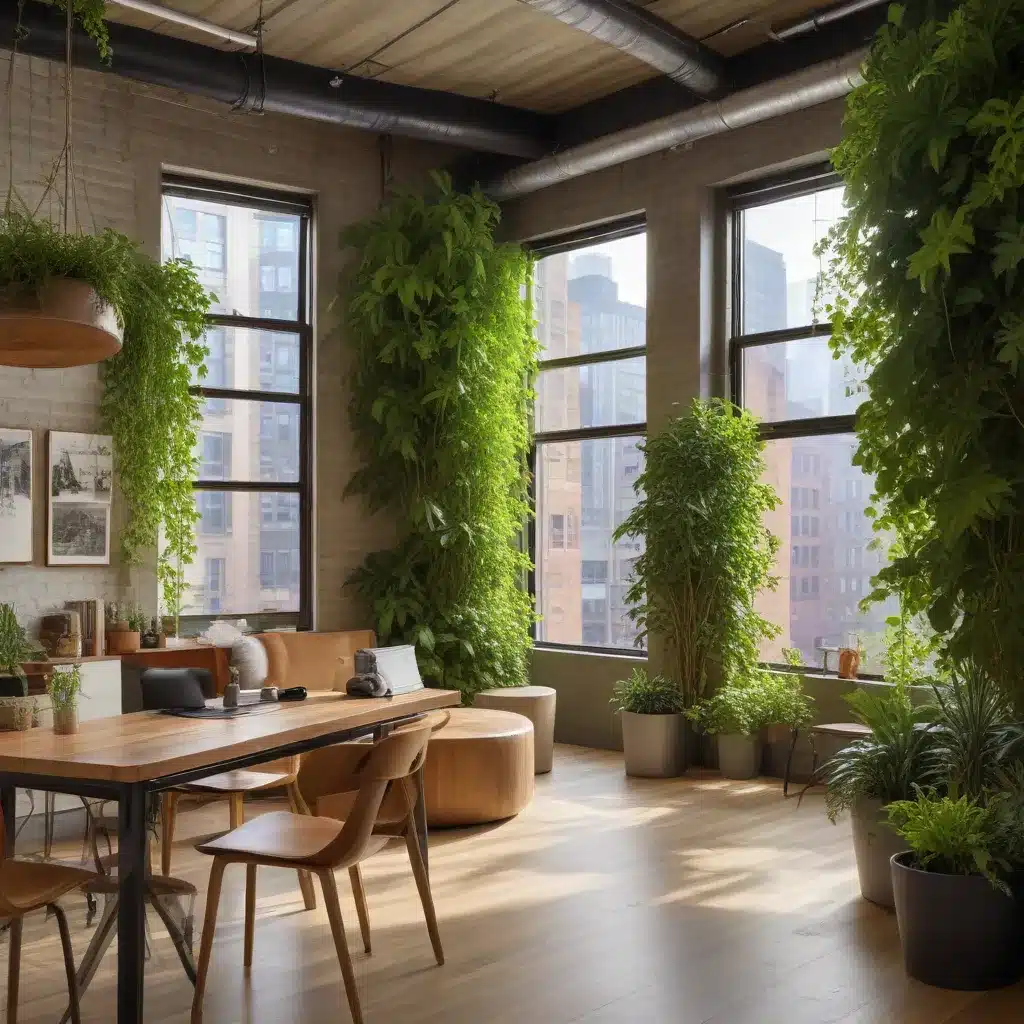
As an experienced home improvement consultant, I’m thrilled to share insights on biophilic design – an innovative approach that brings the restorative power of nature into our urban dwellings. In a world consumed by concrete and technology, the rise of this nature-centric design philosophy offers a refreshing remedy, enhancing both our living spaces and overall well-being.
Understanding Biophilic Design
The Principles of Biophilic Design
At its core, biophilic design is rooted in the innate human affinity for the natural world, a phenomenon coined by American biologist Edward O. Wilson as “biophilia.” This guiding principle suggests that by seamlessly integrating natural elements into our built environments, we can foster a deeper connection with nature and reap profound benefits for our physical, mental, and emotional health.
The Benefits of Biophilic Design
The advantages of biophilic design extend far beyond mere aesthetics. Research has shown that exposure to nature and natural materials can significantly reduce stress levels, lower blood pressure, and promote an overall sense of well-being. Furthermore, incorporating biophilic elements into spaces can improve cognitive function, boost creativity, and enhance productivity – making it an invaluable asset for both residential and commercial settings.
Biophilic Design Elements
Biophilic design encompasses a diverse array of elements, each carefully crafted to cultivate a harmonious balance between the natural and built environments. These include access to natural light, the use of organic materials, the integration of water features, the incorporation of greenery, and the provision of visual and physical connections to the outdoors. By thoughtfully incorporating these elements, designers and homeowners can create spaces that seamlessly bridge the gap between the man-made and the natural world.
Implementing Biophilic Design in Urban Spaces
Maximizing Natural Lighting
In the urban landscape, where natural sunlight is often a precious commodity, biophilic design emphasizes the strategic placement of windows, skylights, and light shelves to harness the transformative power of natural illumination. By flooding interiors with an abundance of daylight, these design elements not only enhance the overall ambiance but also contribute to improved circadian rhythms, better sleep quality, and heightened mental alertness.
Incorporating Natural Materials
Biophilic design champions the use of natural materials, such as wood, stone, and bamboo, which possess an innate ability to evoke a sense of warmth, comfort, and connection to the natural world. The tactile and visual qualities of these materials can create a soothing and rejuvenating atmosphere, fostering a sense of tranquility and well-being within urban dwellings.
Designing Green Spaces
In the concrete jungle, the integration of vibrant green spaces, whether in the form of living walls, rooftop gardens, or meticulously landscaped courtyards, becomes a crucial component of biophilic design. These verdant oases not only purify the air and regulate temperature, but also provide residents with direct access to the restorative benefits of nature, helping to alleviate stress and promote overall wellness.
Biophilic Design Strategies for Apartments
Vertical Gardening
For apartment dwellers faced with limited square footage, vertical gardening presents a versatile and space-efficient solution to incorporating biophilic elements. Cascading wall-mounted planters, modular green walls, and even planted trellises can transform bare walls into lush, living tapestries, bringing the calming presence of nature into compact urban homes.
Natural Ventilation
Capitalizing on the principles of biophilic design, apartment residents can harness the power of natural ventilation to create a healthier, more rejuvenating indoor environment. By strategically positioning windows, incorporating cross-ventilation systems, and leveraging the cooling effects of greenery, homeowners can enjoy enhanced air quality, reduced energy consumption, and a heightened sense of connection to the outdoors.
Biophilic Decor
Beyond structural and architectural interventions, biophilic design can also be seamlessly integrated into apartment interiors through thoughtful decorative choices. Integrating natural fiber rugs, wooden furniture, and potted plants throughout the living spaces can help to infuse a soothing, nature-inspired ambiance and foster a calming, restorative atmosphere.
Integrating Biophilic Design into Condominiums
Communal Green Areas
In the context of condominium developments, biophilic design principles can be applied to shared outdoor spaces, creating verdant sanctuaries that serve as hubs for relaxation, recreation, and community engagement. Thoughtfully planned gardens, serene water features, and shaded seating areas can transform these common areas into oases of tranquility, providing residents with much-needed respite from the hustle and bustle of urban living.
Rooftop Gardens
Capitalizing on the underutilized rooftop spaces within condominium complexes, biophilic design can manifest in the form of lush, elevated gardens. These rooftop oases not only beautify the building’s exterior but also offer residents a private retreat where they can immerse themselves in nature, reap the benefits of urban agriculture, and enjoy panoramic views of the cityscape.
Biophilic Architectural Features
Condominium developers and architects can further incorporate biophilic design elements into the very fabric of the building itself. From atrium spaces that flood interiors with natural light to strategically placed skylights that foster a connection with the outdoors, these architectural interventions can seamlessly integrate nature into the living experience, enhancing the overall well-being of the residents.
As the world becomes increasingly urbanized, the need for biophilic design has never been more pressing. By embracing the principles of this nature-centric approach, homeowners, designers, and developers can create living spaces that not only nourish the senses but also nurture the mind, body, and soul. Whether it’s through the integration of lush greenery, the strategic use of natural materials, or the thoughtful incorporation of natural light, the transformative power of biophilic design can truly elevate the urban living experience, as evidenced by the growing number of successful implementations around the world.
To explore more innovative home improvement ideas and expert insights, be sure to visit Reluctant Renovator – your go-to resource for all things renovation and design.



